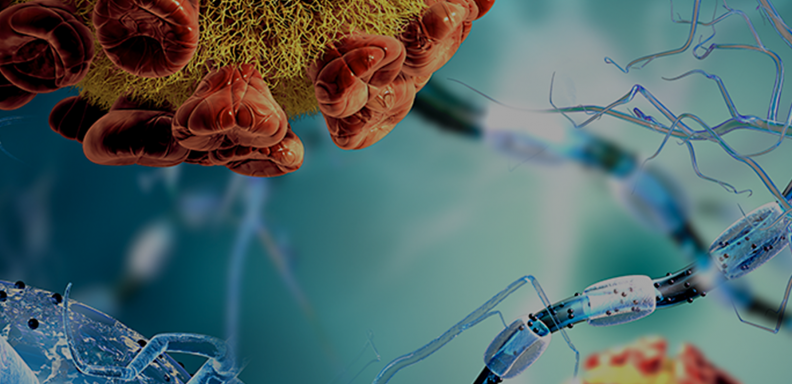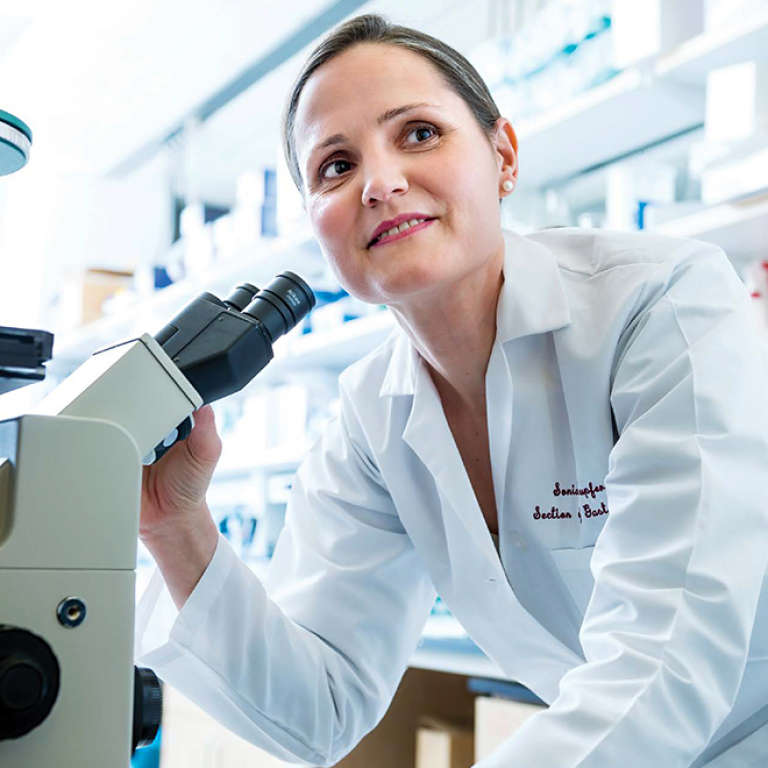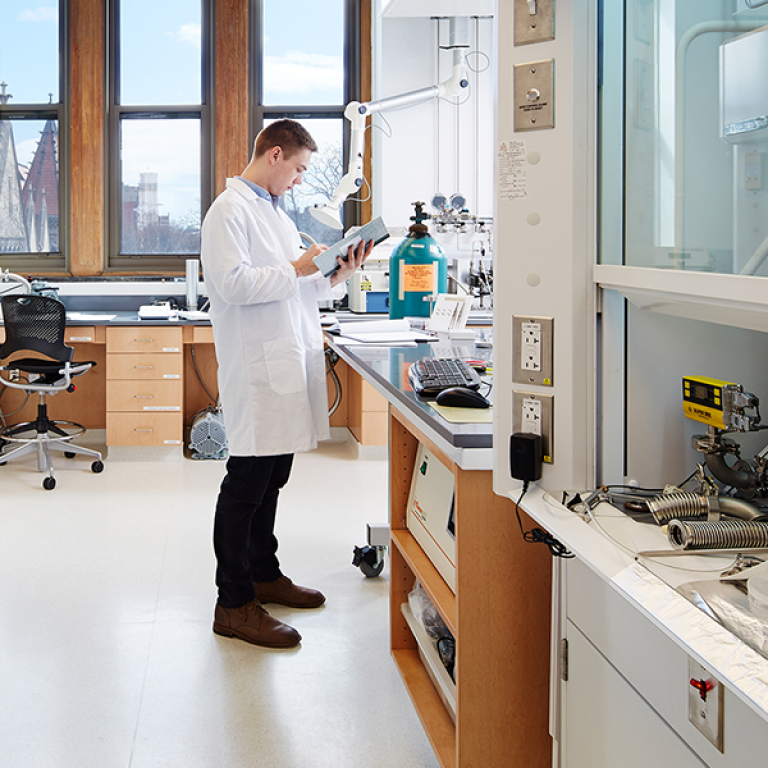By
Matt Wood
Director of Communications, Biological Sciences Division
Standard genetic sequencing approaches can tell you a lot about the genetic makeup and activity in a sample, like a piece of tissue or drop of blood. But they don’t tell you where specific genetic sequences were located inside that sample, or their relationship to other genes and molecules.
Researchers at the University of Chicago are developing a new technology that overcomes these challenges. By tagging each DNA or RNA molecule and allowing neighboring tags to interact, the technique constructs a molecular network that encodes their relative positions, creating a spatial map of genetic material. This technique, called volumetric DNA microscopy, creates a 3D image of an entire organism from the inside out, giving scientists an unprecedented view of genetic sequences and where they are located, down to individual cells.
Joshua Weinstein, PhD, Assistant Professor of Medicine and Molecular Engineering at UChicago, has spent more than 12 years developing DNA microscopy, funded in part by the National Institutes of Health and the National Science Foundation. In a new paper published in Nature Biotechnology, Weinstein and postdoctoral scholar Nianchao Qian used the technology to create a complete DNA image of a zebrafish embryo, a common model organism for studying development and neurobiology.
“It’s a level of biology that no one has ever seen before,” Weinstein said. “To be able to see that kind of a view of nature from within a specimen is exhilarating.”
Unlike traditional microscopes that use light or lenses, DNA microscopy creates images by calculating interactions among molecules, providing a new way to visualize genetic material in 3D. First, short DNA sequence tags called unique molecular identifiers (UMIs) are added to cells. They attach to DNA and RNA molecules and begin making copies of themselves. This starts a chemical reaction that creates new sequences, called unique event identifiers (UEIs), that are unique to each pairing.
It’s these pairings that help create the spatial map of where each genetic molecule is located. UMI pairs that are close together interact more frequently and generate more UEIs than those that are farther apart. Once the DNA and RNA are sequenced, a computational model reconstructs their original locations by analyzing the physical links between UMI-tags, creating a spatial map of gene expression.
Weinstein compares the technique to using data from cell phones pinging each other to determine people’s location in a city. Knowing the cell phone number or IP address of each person is like knowing the genetic sequence of one molecule, but if you can layer on their interactions with other phones nearby, you can work out their locations too.
“We can do this with cell phones and people, so why not do that with molecules and cells,” he said. “This turns the idea of imaging on its head. Rather than relying on an optical apparatus to shine light in, we can use biochemistry and DNA to form a massive network between molecules and encode their proximities to each other.”
DNA microscopy doesn’t rely on prior knowledge of the genome or shape of a specimen, so it could be useful for understanding genetic expression in unique, unknown contexts. Tumors generate countless new genetic mutations, for example, so the tool would be able to map out the tumor microenvironment and where it interacts with the immune system. Immune cells interact with each other and respond to pathogens in context-specific ways, so DNA microscopy could help unravel those genetic mechanisms. Such applications could in turn guide more precise immunotherapy for cancer or tailor personalized vaccines.
“This is the critical foundation for being able to have truly comprehensive information about the ensemble of unique cells within the lymphatic system or tumor tissue,” Weinstein said. “There has still been this major gap in technology for allowing us to understand idiosyncratic tissue, and that's what we're trying to fill in here.”
Additional funding for the study, “Spatial-transcriptomic imaging of an intact organism using volumetric DNA microscopy,” was provided by the Damon Runyon Foundation and the Moore Foundation.



